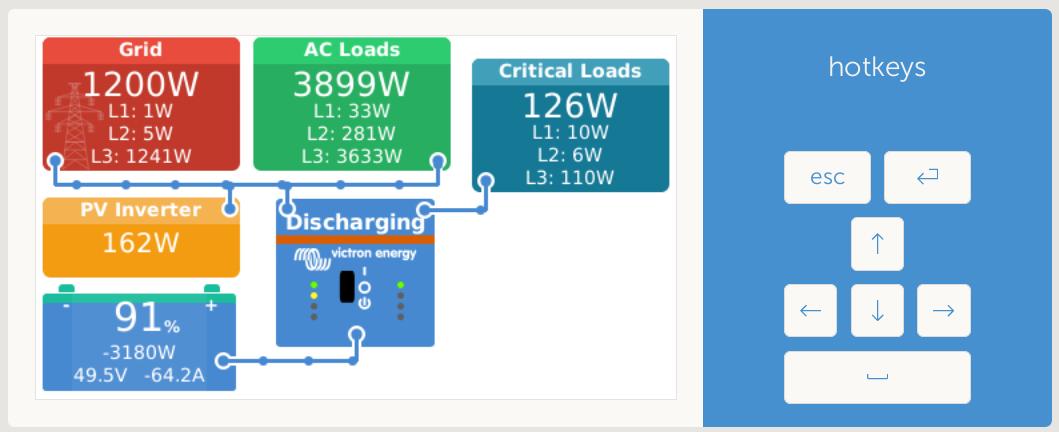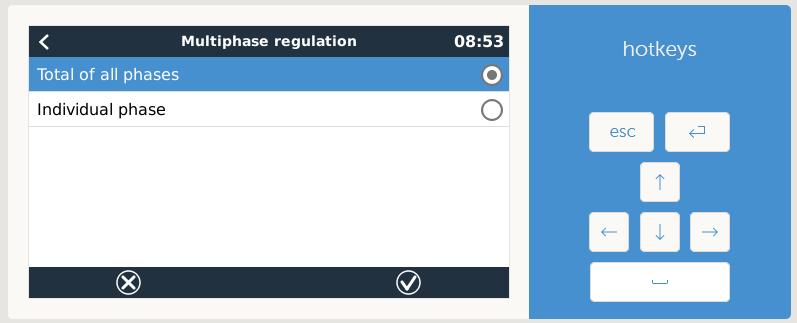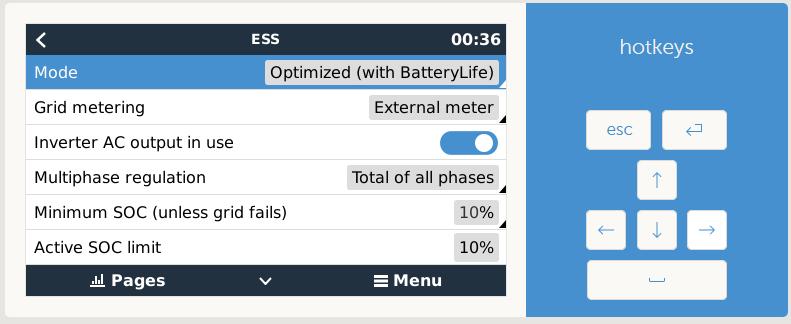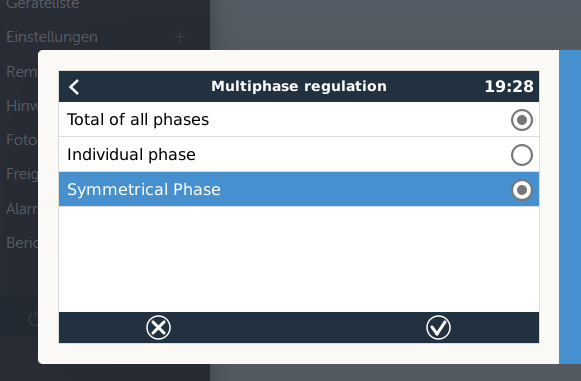Hello Specialists,
I run since several weeks a 3-phase ESS installation with Multiplus-II 3000, 48V, a grid based 3-phase PV and a 8 pieces Pylontech stack with US2000. It works quite okay and perfect. But based on certain circumstances it has behaviours I don't understand. I hope somebody can have a look and give my feedback.

On L3 is charging a Nissan env-200 with about 3,6 kW. Based on the remote console I see that the systems buys AC energy from the grid L3 with 1,2 kW and 3,2 kW is discharged in DC from the batteries. PV is very low, is equal to 0. The ESS system delivers/buys in total about 4,4 kW energy for a total AC load of 3,9 kW and with respect to yield of converting DC to AC I think this balance is correct.
I understand that a Multiplus-II 3000 is only able to deliver 2,4 kW AC which fits perfect with the grid buy of 1,2 kW to the total of 3,6 kW load on L3.
Question: Why is "no-traffic" on L1 and L2?
There was some time ago a similar discussion from @gnagflow but I couldn't find there a final solution. As I didn't wanted to hijack his thread I made my own question. But in this thread there was the hint:
... you have to turn phase compensation 'off' to get ...
I tried both settings the standard, "total of all phases" as recommended as standard

and "individual phase"

but it didn't change in behaviour of L1 and L2! It looks to me, that the Multiplus for L1 and L2 are in standby, isn't it?
I checked what could cause this "unbalanced" answer of the ESS-system. There was no battery discharge limit, it was set for 200A, the battery temperature was normal with 22°C - I have seen in the past discharge value of the batteries up to 180 A for high 3-phase AC loads, so each Multiplus is able to use individually 60 A to do it's job.
In Victrons ESS documentation there is mentioned:
"Phase compensation enabled (default & recommended)
ESS balances the total power (L1 + L2 + L3) to 0 W.
Intelligent optimization of the balance between the phases
ESS intelligently optimizes the balance between the phases -as far as possible."
"as far as possible" - Where is my missunderstanding or my problem?
What can I do to puzzle it out?
DayAndNight



